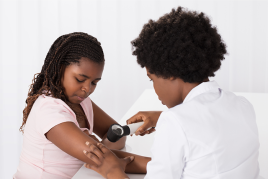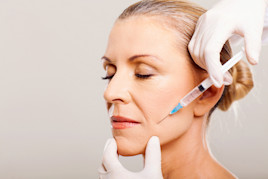What you should know about products that promise to cure eczema
Promises of a cure are tempting. When “all natural” and “proven effective” are added to that promise, the product certainly seems worth trying.
3 reasons to talk with your child’s dermatologist before trying an eczema cure
If you’re tempted to try a product or method that is said to “cure” eczema, it’s important to remind yourself that it’s currently not possible to cure eczema (atopic dermatitis).
Use caution
Products that promise to cure eczema may not be as safe as you think. It’s important to remind yourself that it’s currently not possible to cure eczema

Even if the product or method seems completely safe, be sure to talk with your child’s dermatologist first. Here’s why:
Some eczema cures have proven toxic. This may require a trip to the emergency room — or even an organ transplant.
Products promoted as eczema cures are not regulated. Strong prescription medicines have been found in some products that promise to cure eczema. You just wouldn’t know it because this information is not disclosed. Using such a product can cause serious side effects.
Although these products are not regulated (meaning they do not have to undergo testing before being sold), products that are found to be dangerous are taken off the market or are changed. This can take time. Why risk using such a product?
Some treatments promoted as a cure involve removing many healthy foods from your child’s diet. These foods often supply nutrients children need to develop, so removing these foods can cause serious health problems.
Cure definition
To use a medicine or another treatment to get rid of a disease so that the person no longer has the disease.
What is possible?
When it comes to eczema, here’s what is possible:
Eczema can be controlled with eczema friendly skin care, medicine, and trigger management.
Eczema may go away on its own. There is no way to know whose eczema will go away.
Reference
Sidbury R, Tom WL, et al. “Part 4: Guidelines of care for the management of atopic dermatitis. Part 4: Prevention of disease flares and use of adjunctive therapies and approaches.” J Am Acad Dermatol. 2014 Dec;71(1):1218-33.
 Molluscum contagiosum: How to safely treat it
Molluscum contagiosum: How to safely treat it
 Biosimilars: 14 FAQs
Biosimilars: 14 FAQs
 Practice Safe Sun
Practice Safe Sun
 Relieve uncontrollably itchy skin
Relieve uncontrollably itchy skin
 Fade dark spots
Fade dark spots
 Untreatable razor bumps or acne?
Untreatable razor bumps or acne?
 Laser hair removal
Laser hair removal
 Scar treatment
Scar treatment
 Botox
Botox
 Free materials to help raise skin cancer awareness
Free materials to help raise skin cancer awareness
 Dermatologist-approved lesson plans, activities you can use
Dermatologist-approved lesson plans, activities you can use
 Find a Dermatologist
Find a Dermatologist
 What is a dermatologist?
What is a dermatologist?